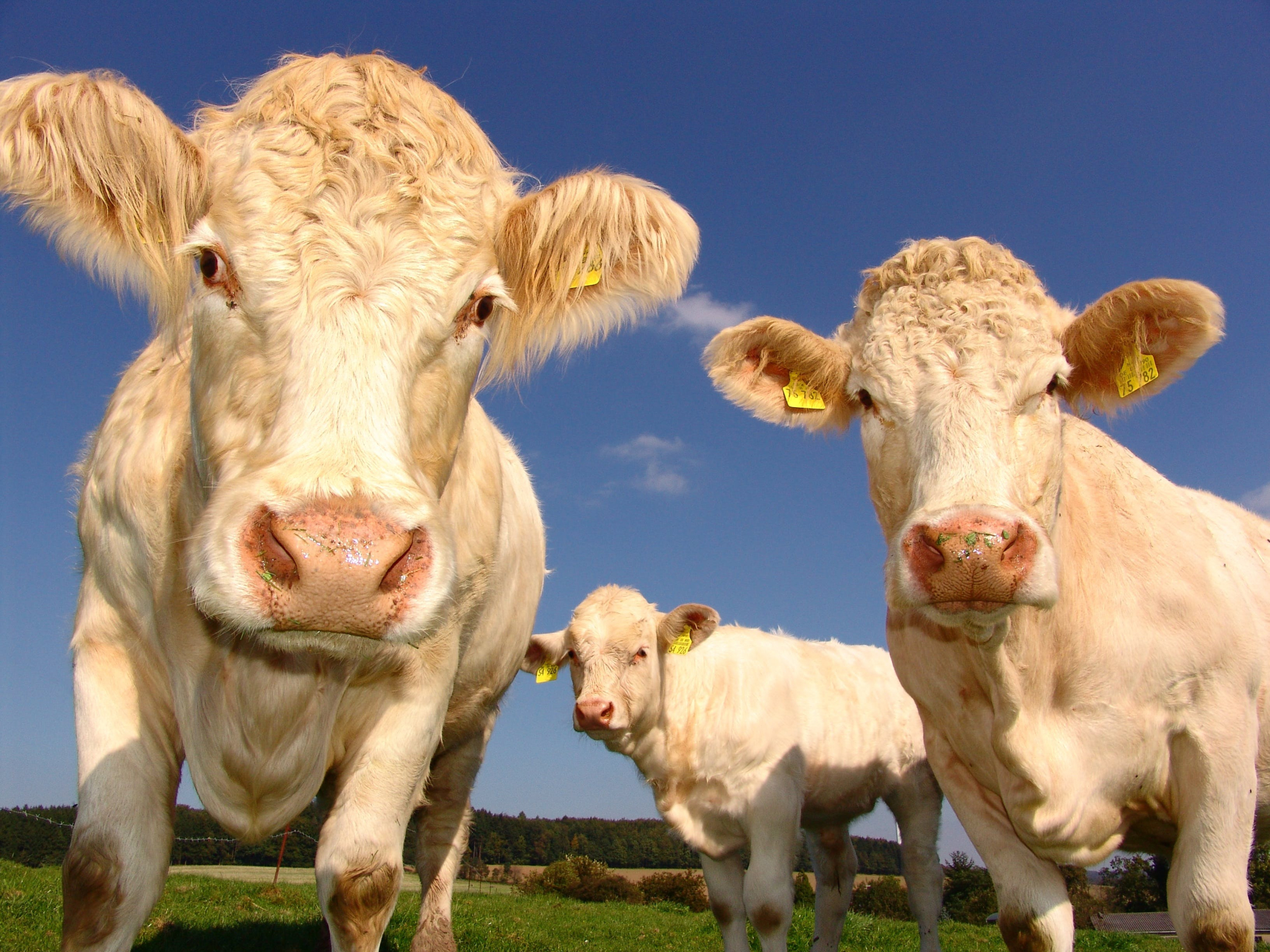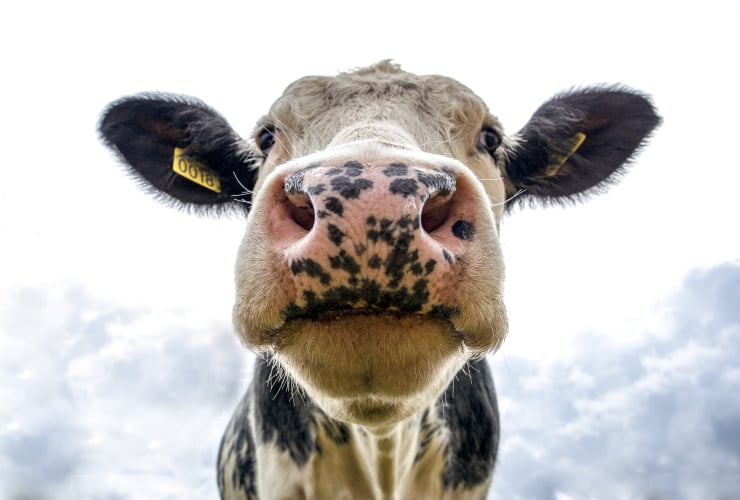When crumbs of soil from prime farmland sift through fingers of my right hand, I conclude that it should be used to grow food crops for human consumption, while maintaining or improving soil health. Obviously, prime farmland must not be paved over.
When more prime farmland soil trickles a bit faster through four-and-a-half digits (I lost the half on the farm) of my left hand, I ponder the best way to maintain or improve the health of that soil. My research informs me that forages (clover, alfalfa, timothy, etc.) are required in rotation or in conjunction with row crops. In addition, animal manure, other organic amendments and crop residues can be applied to improve soil health.
Livestock play an important role, in particular ruminants, which convert soil-restoring forages to meat and milk. Livestock also provide the manure. In addition, livestock can consume and convert human-inedible materials such as food processing byproducts, wasted food, crops which inadvertently do not meet specifications for human consumption and crop residues.
Clearly, there is an ecological role for livestock.
Although I spent most of my career researching and teaching about agriculture rather than actually farming, I am firmly rooted in a Mennonite tradition of mixed livestock-crop farming, with ancestors who were known as clover farmers as well as Anabaptist heretics.
Today in a world of 1.4 billion cattle, nine hundred million pigs and 24 billion chickens, more grain crops for livestock feed are required, as well as the concomitant land to grow them. Furthermore, to maximize litres of milk per cow or kilograms of animal gain per day, human-edible food often enhances livestock feed rations.
Of all the world’s crops, only 55 per cent of crop calories go directly toward people. The rest are allocated to biofuels or animal feed. Unfortunately, global methane emissions from livestock are 131.7 teragrams of methane per year, about one-third of global anthropogenic methane emissions.
Our ancestors practised agriculture with due respect for the ecological role of livestock. The problem now is that with efforts to increase demand for animal protein, the livestock tail is wagging the entire food system.
Since the Second World War, when 20 million deaths from starvation exceeded those from direct military conflict, agricultural leaders have declared, “We must feed the world.” We responded on our home farm in the 1960s by turning it into one cornfield, as did others across Ontario. Now it’s time to rethink the dedication of over two million Ontario prime farmland acres per year for number 2, yellow dent corn, grown mostly for feed and fuel.
Four months ago, it was confirmed in a Science Advances paper that six of the nine planetary boundaries have been crossed, putting Earth well outside the safe operating space for humanity. The boundaries — including excess flows of nitrogen and phosphorus, biodiversity loss, pollution by novel entities, land system change and freshwater change — are significantly impacted by agriculture, particularly ballooning livestock numbers.
I understand the sunk costs (financial, cultural, emotional) of the livestock system in which I grew up. Nevertheless, William Rees of the University of British Columbia, who developed the ecological footprint analysis, stated in his recent paper The Human Ecology of Overshoot, “We are consuming and polluting the biophysical basis of our own existence… The global economy will inevitably contract and humanity will suffer a major population ‘correction’ in this century.”
Turning away from such warnings propels ecological systems further into overshoot. Governments must develop policies to help livestock farmers break free from sunk costs, which prevent them from switching to human-edible crop production. To feed the world and avoid overshoot, we need more human-edible food crops and less feed.
Currently, more than 40 per cent of prime farmland in Ontario dedicated to grow feed crops for livestock could be used instead to grow food crops for human consumption. In this scenario, there would still be sufficient animal protein for an adequate diet, according to Canada’s Food Guide.
Many cultures have lived well for centuries with much less animal protein per person than consumed now in North America and Europe. It is becoming increasingly evident that we endanger our capacity to feed the world by over-assigning feed crops to prime farmland. The priority for this heritage is to grow crops for human-edible food while maintaining or improving soil health and overall ecological integrity.
Ralph C. Martin is a retired University of Guelph professor. Information on his book, Food Security: From Excess to Enough, can be found at www.ralphmartin.ca.
I am not sure why the author
I am not sure why the author states that livestock numbers are ballooning. In North America cattle numbers are at their lowest in 50 years. That is according to USDA and Statistics Canada. At the same time an alarming number of acres of grass, native and tame are being broken to cultivate crops such as canola, and pulse crops. In Saskatchewan these same farmers are still clearing trees for these crops. In other countries we would call it deforestation. I do agree with much of what he says, but saying that numbers are ballooning is misleading.
https://www150.statcan.gc.ca
https://www150.statcan.gc.ca/t1/tbl1/en/tv.action?pid=3210015501&pickMem...
It also bears noting that hormones used in meat agriculture to reduce the time from birth to market size also decreases the cost of feed.
The number of animals doesn't necessarily equate with the number of pounds of animal flesh that goes to market; neither does it relate to nutritional quality or ultimate safety of the meat.
The link also makes clear the increase in size of operations. Had acreage to support each particular species of food animals been included, one might have been able to guestimate the amount of farmland lost to industry and housing developments.
The statistics at the site above refer to what is produced, not to what is consumed within the country. Perhaps what we should be calling for is a production and marketing regimen that prefers provision for domestic markets and that reduces our dependence on food imports.
One aspect of this issue
One aspect of this issue which was not mentioned is the fact that there are areas where draft animals are used extensively, either because people cannot afford machinery or because the landscape does not allow for mechanization. Draft animals are essential for these areas, and must also be fed.
How much in Canada? There
How much in Canada? There doesn't seem to be all that much land devoted to such farming here?
55% land grows human food and
55% land grows human food and apparently we waste 30+% of that food thought much of that is imported. Reduce waste, more food available. Kinda like upgrading your home to reduce energy use






Comments